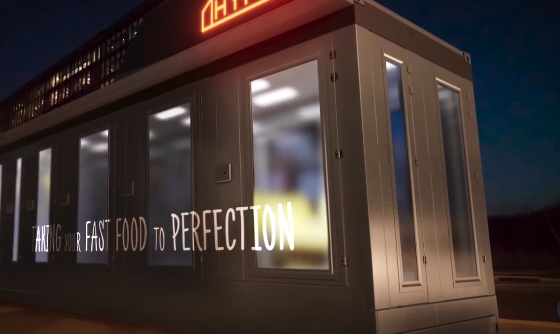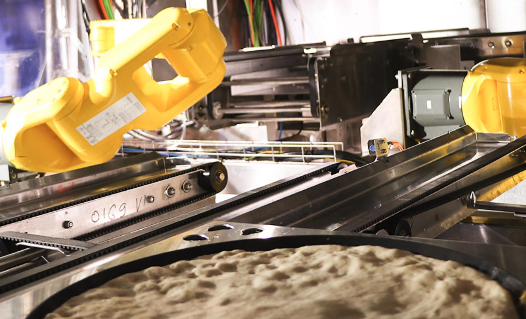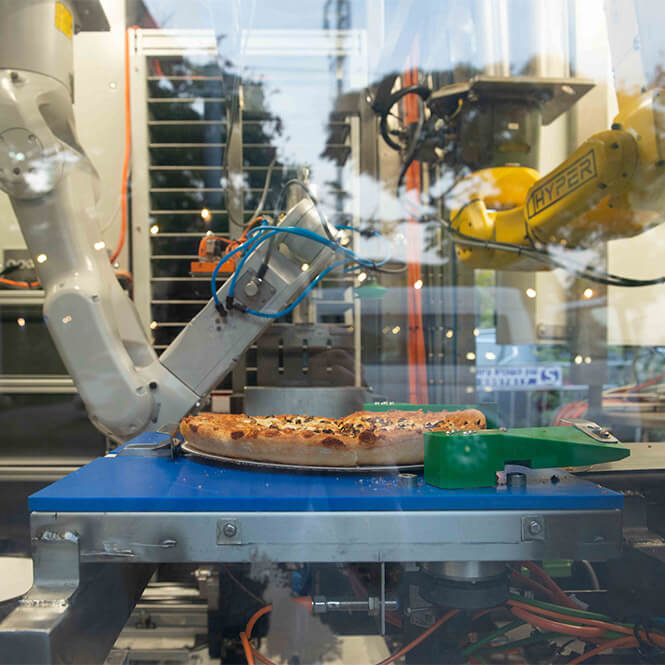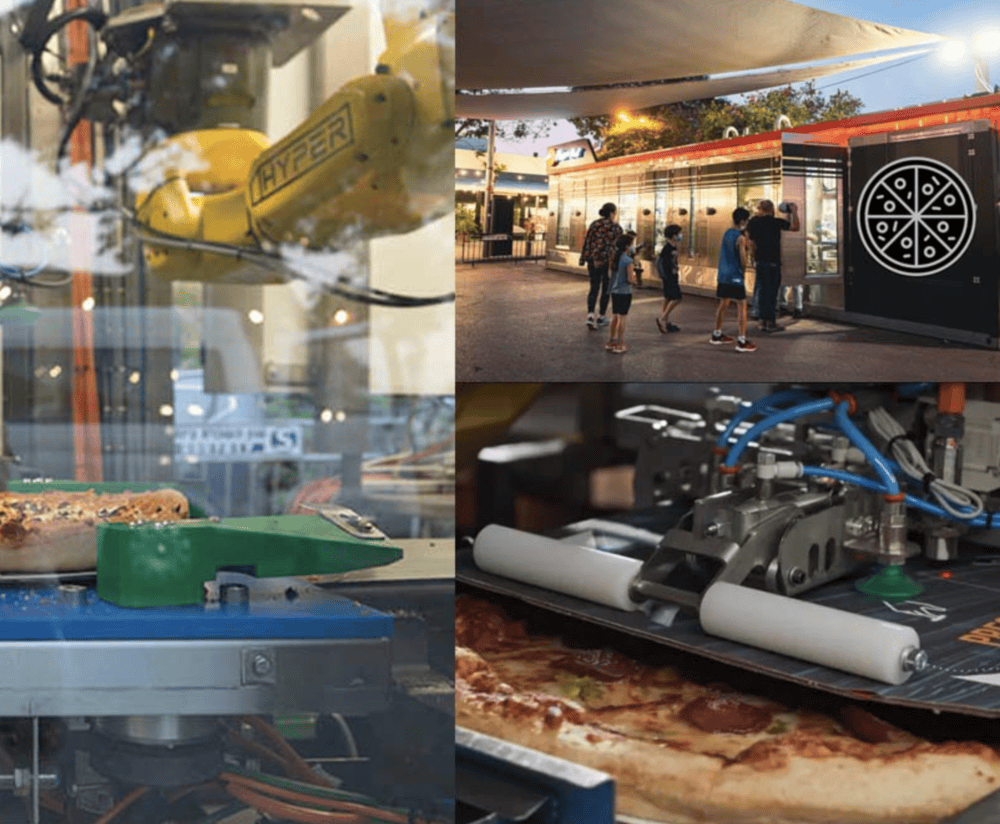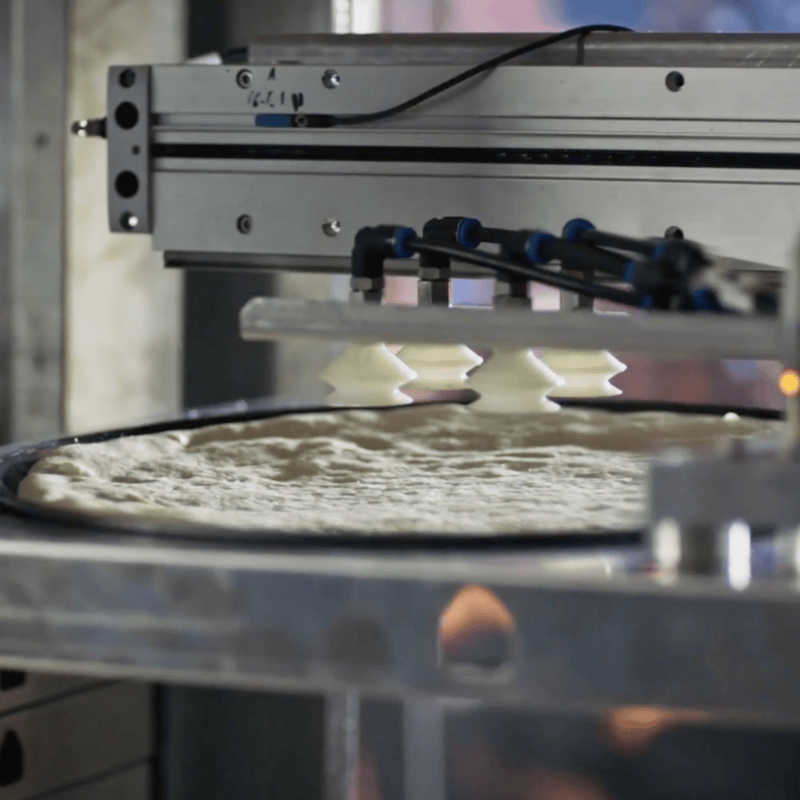Did you know that integrating robotics into cleaning processes can reduce chemical use by up to 90%?
This transformative approach not only enhances sustainability but also aligns with the fast-food industry’s push towards automation and efficiency. In this report, we delve into how fast-food restaurants can leverage robotics for chemical-free cleaning, breaking down the topic into clear, digestible parts to ensure a comprehensive understanding.
Introduction to Chemical-Free Cleaning
The fast-food industry is increasingly adopting automation to streamline operations, reduce costs, and enhance customer satisfaction. One area where automation is making significant strides is in cleaning processes. Chemical-free cleaning, facilitated by robotics, is gaining traction as it offers an environmentally friendly alternative to traditional methods. This approach utilizes technologies such as UV light and steam to maintain hygiene standards without the use of harmful chemicals Hyper Food Robotics
The Role of Robotics in Cleaning
Robotic Cleaning Units
Robotic cleaning units equipped with UV or steam technology are at the forefront of chemical-free cleaning solutions. These units autonomously navigate the restaurant environment, sanitizing floors and surfaces with precision. The use of UV light effectively kills bacteria and viruses, while steam cleaning removes grime and dirt without leaving chemical residues Hyper Food Robotics
Automated Dishwashing Systems
In addition to surface cleaning, automated dishwashing systems play a crucial role in maintaining cleanliness. These systems use steam or electrolyzed water to sanitize dishes and utensils. By integrating with robotic arms, these systems can autonomously load and unload dishes, ensuring a seamless and efficient cleaning process (Hyper Food Robotics).
Implementation Steps
Step 1: Assessing Current Cleaning Practices
Before transitioning to a robotic cleaning system, it is essential to evaluate the existing cleaning practices. This involves identifying areas where chemical use is prevalent and assessing the feasibility of replacing these methods with robotic solutions.

Step 2: Selecting Appropriate Robotic Technologies
Choosing the right robotic technologies is crucial for successful implementation. Factors to consider include the size of the restaurant, the types of surfaces that require cleaning, and the specific cleaning requirements. For instance, UV technology is ideal for surface disinfection, while steam is effective for deep cleaning and sanitization [Ecocare Tech].
Step 3: Integration with Existing Systems
Integrating robotic cleaning units with existing automation systems is a critical step. This integration ensures that cleaning processes are synchronized with other automated functions, such as food preparation and service. Advanced robotics platforms can facilitate seamless communication between different systems, optimizing overall efficiency [Proven Robotics].
Step 4: Training and Maintenance
While robotic systems are designed to operate autonomously, regular maintenance and occasional human oversight are necessary to ensure optimal performance. Training staff to monitor and troubleshoot these systems can prevent downtime and maintain high hygiene standards.
Economic and Environmental Benefits
Implementing robotic cleaning systems offers several economic and environmental advantages. By reducing the reliance on chemical cleaners, restaurants can lower their operational costs and minimize their environmental footprint. Additionally, automation addresses labor shortages by filling roles traditionally held by human workers, further enhancing efficiency [Hyper Food Robotics].
Challenges and Considerations
Initial Investment
The initial investment required for robotic cleaning systems can be significant. However, the long-term savings in labor and chemical costs can offset these expenses. It is essential for restaurants to conduct a cost-benefit analysis to determine the financial viability of such investments [Richtech Robotics].
Technological Adaptation
Adapting to new technologies can pose challenges for staff and management. Providing adequate training and support can facilitate a smooth transition and ensure that the robotic systems are utilized to their full potential [HowToRobot].
Wrapping up
The integration of robotics for chemical-free cleaning in fast-food restaurants represents a significant step towards sustainable and efficient operations. By leveraging advanced technologies, these establishments can maintain high hygiene standards while reducing their environmental impact. As the fast-food industry continues to evolve, embracing robotic cleaning solutions will be crucial in meeting the demands of modern consumers and achieving operational excellence.

Key Takeaway: Fast-food operators should explore the adoption of robotic cleaning technologies to enhance sustainability and efficiency, positioning themselves at the forefront of industry innovation.
FAQ: Robotics for Chemical-Free Cleaning in Fast Food
Q: What is chemical-free cleaning in fast-food restaurants?
A: It’s cleaning with UV light or steam instead of harsh chemicals, ensuring safe, effective sanitation while reducing environmental impact.
Q: How do robots perform chemical-free cleaning?
A: Robots autonomously clean floors, surfaces, and dishes using UV or steam technology, eliminating bacteria and grime without chemical residues.
Q: What benefits can restaurants expect?
A: Up to 90% reduction in chemical use, lower water consumption, reduced labor needs, consistent hygiene, and improved sustainability.
Q: Is it expensive to implement robotic cleaning?
A: There is an upfront investment, but many restaurants recover costs through savings on chemicals, water, and labor over time.
Q: Do staff need special training to use these robots?
A: Only minimal training is needed for monitoring, maintenance, and troubleshooting, as most systems are user-friendly and operate autonomously.
Q: How do I start implementing robotic cleaning?
A: Assess your current cleaning practices, identify areas for robotics, select the right technologies, and integrate them with your restaurant’s workflow.
Q: Why should fast-food operators consider this now?
A: Robotics for chemical-free cleaning improves operational efficiency, aligns with sustainability goals, and positions restaurants at the forefront of industry innovation.
About Hyper Food Robotics
Hyper Food Robotics specializes in transforming fast-food delivery restaurants into fully automated units, revolutionizing the fast-food industry with cutting-edge technology and innovative solutions.
Hyper-Robotics addresses inefficiencies in manual operations by delivering autonomous robotic solutions that enhance speed, accuracy, and productivity. Their robots solve challenges such as labor shortages, operational inconsistencies, and the need for round-the-clock operation, providing solutions like automated food preparation, retail systems, and kitchen automation.

